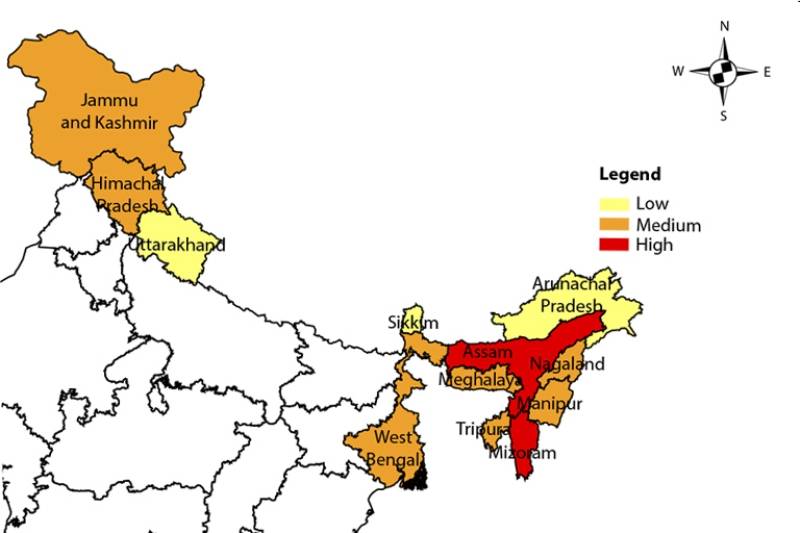
Challenges like climate change, biodiversity loss, faulty urbanization and degradation of natural resource like water, land, air etc., has put a question mark on the effectiveness of sustainable development plans in the Indian Himalayan Region (IHR). Abrupt tourism growth in this region has disturbed the fragile mountain ecosystem. Sikkim is a model state for promoting ecotourism products and infrastructure, solid waste management concepts, and capacity building efforts but is largely challenged by the emerging aspects of mass tourism, human-wildlife conflict, shrinking glaciers, landslides and climate change.
Eco-tourism
Eco-tourism means venturing into and enjoying nature in such a way as to assure that negative impacts on the cultural and natural environment are minimized and mitigated. No permanent structures are allowed to be constructed. It aims at protection of natural and cultural heritage and provides opportunities to enhance livelihood of local people. Following principles forms the basis of eco-tourism:
1. Positive experience for both, visitors and hosts
2. Build environmental and cultural awareness and respect
3. Minimization of adverse impacts
4. Financial benefits for conservation
5. Livelihood opportunities for locals
6. Recognition of rights of indigenous groups

Agro-tourism
Agro-tourism capitalizes on rural culture as a tourist attraction. It can aid in development of local economy and poverty alleviation. Agro-tourism is similar to eco-tourism except that its primary appeal is cultural landscape rather than natural landscape. It can help in in-situ conservation of plant and animal genetic resources. It is symbiotic association of farming sector, tourism and food business. It aims at integration of diverse farm enterprises, so as to provide an irresistible experience to the visitors. Basic three principles of agro tourism are:
1. Something for visitors to see – Like animals, birds, farms, nature, culture, dress, festivals and games
2. Something for visitors to do – Like agricultural operations, bullock cart riding.
3. Something for visitors to buy – Like rural crafts, dress, fresh agriculture products, some region specific items as a sign of remembrance.

All state agriculture universities, veterinary and fisheries universities, ICAR institutes, Krishi Vigyan Kendras, farmers training centres could be brought under this concept for all-round rural development. Besides mitigating instability in the net farm incomes and rural youth emigration, this concept can contribute to environment conservation and sustainable development.
Agro-ecotourism
Primarily, IHR is agriculture and tourism dominated area. Most of people derive their livelihood through these sectors. But, unplanned growth in these sectors has led to the instability in the Himalayan region and degradation of natural resources. To sustain these sectors, a combined Agro-ecotourism development is needed in the area, as former aids in the sustainable development of rural areas, while latter conserves the environment.















